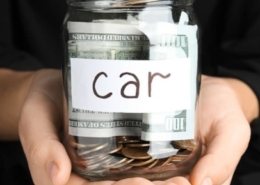Car Lease Mileage Allowance Explained: What You Should Know
Leasing a car? Don’t let mileage limits catch you off guard—learn how to avoid costly fees and drive stress-free.
How to Navigate Car Lease Mileage Limits
Car leasing has a charm of its own. You can drive a shiny, brand-new car without the commitment of buying it. But then, lurking in the shadows like that sweater you forgot to return, there’s this thing called mileage allowance.
What is it? Why should you care? And why does it always seem to pop up like an unwanted surprise?
Key Takeaways
- Mileage limits matter: Stick to your allowance or risk expensive penalties at the end of your lease.
- Know your driving habits: Consider your yearly mileage before signing the lease, not after.
- Adjusting options: You can negotiate a higher mileage limit upfront or purchase more miles if needed.
Before we dive into the full depths of mileage allowances, let’s take a step back and look at the big picture. I’ll tell you right now—by the end of this article, you’ll understand what mileage allowance is and how to wrangle it into something manageable, like taming a wild puppy at the park.
Car Leasing Tip: If you want to lease a car, you might notice steep prices in today’s market. Many end up paying above the suggested rate. But don’t worry! You can still score a great deal by requesting a free price quote to compare lease offers from dealers in your area.
Table of Contents
- What is a car lease mileage allowance?
- Why does mileage allowance exist?
- How driving habits affect the limit
- Standard mileage allowance limits
- What happens if you exceed the limit?
- Is there a way to avoid mileage overages?
- How to choose the proper allowance
- Can you adjust during a lease?
- What if you don’t use all your miles?
- Is a high-mileage lease worth it?
- Mileage overages: Prepare to pay
- Are mileage allowances negotiable?
- End-of-lease options for excess mileage
- The cost of ignoring mileage allowances
- Mileage allowance vs. buying a car
- Frequently asked questions
- Final thoughts
What is a Car Lease Mileage Allowance?
A car lease mileage allowance is like that “all you can eat” buffet, except with a catch. You get a certain amount of miles you can drive during your lease term, typically 10,000 to 15,000 miles per year. If you stay within this limit, everything is gravy. But the moment you go over, you pay for every mile over the limit—sometimes as much as 25 cents or more per mile.
Suddenly, that leisurely weekend trip to the countryside costs you more than planned. And it adds up quickly. Imagine going just 2,000 miles over your limit. That could mean paying an additional $500!
But I’m getting ahead of myself—let’s break this down more calmly, like one of those yoga classes I pretend to attend.
RELATED: Pros and cons of leasing a car
Why Does Mileage Allowance Exist?
Leasing companies offer cars for a lower monthly payment because they expect the vehicle to retain a certain value by the end of the lease. The fewer miles the vehicle has, the more it’s worth when you return it.
Excess mileage? Well, that decreases the car’s value. So, when you go over the mileage allowance, the leasing company compensates by charging you for that extra wear and tear.
It’s their way of saying, “You didn’t play by the rules, so here’s your bill.”
How Does Your Driving Habits Affect the Mileage Limit?
If you drive to the corner store instead of walking (don’t worry, I won’t judge), you might not need a high mileage allowance. On the other hand, if you’re commuting 50 miles a day or you’re fond of impromptu road trips, you might need more flexibility in your lease.
Take a moment to reflect on your driving habits before committing to a mileage limit. The last thing you want is to be caged in by a too-small allowance, feeling like your car lease judges you every time you drive to the grocery store instead of ordering online.
RELATED: Should you lease or buy a car?
Standard Mileage Limits: What to Expect
Most car leases offer a standard mileage allowance between 10,000 and 15,000 miles per year. Sounds reasonable, right? For a lot of people, this works perfectly. But not everyone fits neatly into that box. Here’s a breakdown:
- 10,000 miles/year: Best for light drivers—think local errands and occasional trips.
- 12,000 miles/year: A good middle ground for those with regular commutes and weekend drives.
- 15,000 miles/year: Ideal for people with long daily commutes or who enjoy frequent road trips.
If you drive more than 15,000 miles a year, consider negotiating for a higher mileage allowance upfront. It’ll cost more, but it’s far cheaper than paying those hefty overage fees later.
- How to Buy a New Car Below Factory Invoice Price – True dealer cost and the factory invoice price are not the same… dealer cost can be much lower.
- Figure a Fair Profit New Car Offer – How to calculate a fair profit new car offer.
- How to Buy a New Car Online – Not sure where to start? Use my step-by-step guide on how to buy a new car online.
What Happens If You Exceed the Mileage Limit?
Ah, the dreaded overage fees—those unexpected charges that can hit you harder than realizing your phone died halfway through a road trip. You’re charged per mile over the limit when you exceed your mileage allowance. And those fees can be as little as 15 cents or as much as 50 cents per mile.
Here’s how it adds up:
- 1,000 miles over at 25 cents/mile = $250
- 3,000 miles over at 25 cents/mile = $750
If you thought you were getting a good deal on your lease, these charges could quickly turn into something that makes you question every mile you’ve driven.
Is There a Way to Avoid Mileage Overages?
Absolutely! There are a few ways you can avoid the dreaded overage charges:
- Know your driving habits upfront: Be honest about how much you drive. If you’re signing a lease and underestimating your mileage needs to keep your payments low, it’s like pretending you’ll only have one drink at happy hour—it rarely works out.
- Negotiate your mileage upfront: If the standard 12,000 miles per year isn’t enough, ask the leasing company for more. It will increase your monthly payment slightly but will be way less than paying overage fees later.
- Purchase additional miles: Some companies allow you to buy extra miles during the lease. This is usually cheaper than paying overage fees at the end of the lease.
- Trade in the vehicle early: If you’re about to exceed your mileage, you can trade in your vehicle early and start a new lease. This isn’t always an option, but it’s worth asking about.
Real-Time Bargain Hunting: Turn to Edmunds for instant access to the latest and greatest local deals, saving you time, money, and stress.
How to Choose the Right Mileage Allowance for Your Lease
Choosing the proper mileage allowance is like picking out shoes—you want them to fit your lifestyle, not just look good in the dealership window. So, before you sign that lease, ask yourself a few key questions:
- How much do you drive now? Check the mileage of your current vehicle and estimate how many miles you typically drive per year.
- Will your driving habits change? Are you planning to move closer to work or start working from home more? If so, you might need fewer miles.
- Do you take road trips often? If you’re the kind of person who drives cross-country every summer, factor that in when considering your mileage allowance. The last thing you want is to be mid-road trip, gazing at the Grand Canyon, only to realize that every scenic mile is costing you a small fortune.Realizing your driving habits and plans will help you choose the right mileage package for your lease. Don’t be afraid to opt for a higher mileage allowance if that’s what best fits your lifestyle. Paying more upfront is better than being hit with a hefty bill.
Can You Adjust Your Mileage During the Lease?
Leases might seem set in stone, but here’s a little secret: in some cases, you can adjust your mileage allowance even after you’ve signed on the dotted line. Some leasing companies allow you to modify your mileage terms if your driving habits change. For example, if you switch jobs and suddenly have a longer commute, it’s worth contacting your leasing company to see if they offer mid-lease mileage adjustments.
Another option is purchasing additional miles at any point during the lease. This is often cheaper than paying for excess miles at the end. It’s like paying for a little more data on your phone plan when you realize that binge-watching Netflix on the train will cost you otherwise.
What Happens If You Don’t Use All Your Miles?
Here’s a twist you might not expect: if you don’t use all your allotted miles by the end of your lease, you don’t get a refund or credit. The leasing company won’t give you a pat on the back for being under the limit. Those unused miles are a little victory for the leasing company—they’re getting a better-conditioned car back than expected.
However, some leases offer rollovers for unused miles into a new lease. It’s rare, but it’s worth asking if you think you’ll be a low-mileage driver. Think of it like those old cell phone plans that let you roll over minutes you didn’t use (if you’re old enough to remember that).
High-Mileage Leases: Are They Worth It?
If you drive a lot—maybe you’re a real estate agent or a sales rep constantly on the go—then you might wonder if a high-mileage lease is the way to go. These leases are designed for drivers who expect to cover more than 15,000 miles per year.
While a high-mileage lease will come with higher monthly payments, it could be worth it if it saves you from paying steep mileage overage fees later. Always compare the cost of the high-mileage lease option with the potential overage fees you’d face if you go over a standard mileage limit.
Mileage Overages: How to Prepare and Pay
Let’s say you’ve already signed your lease, and you’re halfway through when you notice that your mileage is creeping dangerously close to the limit. You have options to prepare before the end-of-lease charges come rolling in.
- Track your mileage regularly: This can help you avoid surprises. Many modern cars have built-in systems for tracking your mileage, or you can use apps to monitor your usage.
- Cut back on unnecessary trips: This sounds obvious, but cutting back on non-essential driving can save you in the long run. Carpooling, using public transportation, or even walking for short trips can help keep your mileage in check.
- Consider purchasing more miles: If you know you will exceed your limit, contact your leasing company to see if they offer the option to buy additional miles before your lease ends. This will usually be cheaper than paying for excess mileage at the end.
Can You Negotiate the Mileage Allowance?
Believe it or not, lease terms aren’t always set in stone, and you can often negotiate the mileage allowance before signing your lease. It’s like haggling for that last slice of cake at a dinner party—it’s possible and worth it if done right.
Dealerships might try to push the standard 12,000 miles a year, but if you need more, ask for it. If you do, just be prepared for a slight increase in your monthly payments. It’s better to pay more for peace of mind than to dread every extra mile you drive.
End-of-Lease Options for Excess Mileage
When the lease ends and you’ve gone over the mileage allowance, don’t panic. You still have a few options:
- Buy the car: If you’ve exceeded your mileage limit by a lot, buying the vehicle at the end of the lease might make financial sense. That way, you avoid paying mileage overage fees altogether and get to keep a car you’re already familiar with.
- Lease another car: Some leasing companies will forgive or roll over excess miles if you lease another vehicle. It’s like a “second chance” without the guilt trip.
- Negotiate a reduced fee: It’s not guaranteed, but some leasing companies may be open to negotiating your overage fees, especially if you’re close to your limit or a loyal customer.
The True Cost of Ignoring Mileage Allowances
Let’s be honest: ignoring the mileage allowance is easy until the lease is nearly over. You might be tempted to think, “I’ll just deal with it later.” But ignoring those numbers could cost you hundreds, if not thousands, in penalties. Understanding your mileage habits and choosing the proper allowance is crucial to controlling your lease costs. Otherwise, that sweet deal on a new car could sour your budget.
Driving over the limit can also affect your relationship with the leasing company. If they feel you’ve abused the terms of your lease, they may be less willing to offer favorable deals in the future. Leasing is about maintaining trust, and part of that trust is respecting the agreed-upon mileage limit.
Mileage Allowance vs. Buying a Car
For some, the whole concept of a mileage allowance might make them reconsider leasing altogether. Buying a car might be a better option if you love the freedom to drive without restrictions or regularly exceed 15,000 miles a year.
When you buy a car, you don’t have to worry about overage fees or mileage limits. You drive as much as you want, wherever you want. And while leasing comes with lower monthly payments and the allure of always having a new car, buying gives you long-term freedom and financial control.
RELATED: How to do a lease buyout
FAQs
What is a typical car lease mileage allowance?
Most leases offer a mileage allowance of 10,000 to 15,000 miles per year, though you can negotiate for more if needed.
What happens if I go over the mileage limit on my lease?
If you exceed your mileage allowance, you’ll be charged a fee for each mile over the limit, which can add up quickly.
What should I do if I’m close to exceeding my mileage limit?
You can try to reduce unnecessary driving, track your miles, or inquire about purchasing more miles from the leasing company.
Is a high-mileage lease worth it?
If you drive more than the standard mileage limits, opting for a high-mileage lease may be worth the extra cost to avoid overage fees.
Can I avoid paying for excess mileage at the end of my lease?
One way is to purchase the car at the end of the lease, which lets you avoid paying overage fees entirely.
Conclusion: Car Lease Mileage Allowance Tips
Understanding car lease mileage allowances is essential for anyone considering a lease. It’s not just a tiny detail to overlook—it’s a key factor that can drastically affect how much you pay over the course of your lease. Knowing your driving habits, negotiating the right mileage limit, and being mindful of your usage throughout the lease term can save you hundreds, if not thousands, in penalties.
You can avoid the dreaded overage fees by keeping your mileage in check, tracking it regularly, and exploring options like buying extra miles or negotiating your lease terms. Ultimately, a little planning goes a long way toward ensuring your lease experience is smooth and stress-free.
















